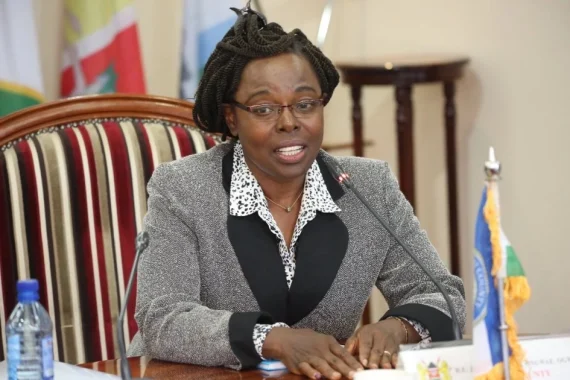Nairobi, Narok, and Kiambu counties have emerged as the top performers in own-source revenue collection for the 2024/2025 financial year, while Tana River surpassed its annual revenue target, according to the latest Controller of Budget report.
Nairobi collected KSh 9.9 billion, maintaining its position as the country’s top county in revenue generation. Narok followed with KSh 4.9 billion, driven mainly by tourism income, while Kiambu secured third place with KSh 3.3 billion, attributed to growth in land transactions and local business activity.
Tana River County recorded the most significant achievement by collecting 172 percent of its annual target. The report attributed the county’s performance to effective collection of levies from gypsum extraction, highlighting it as a benchmark for resource utilization at the county level.
Controller of Budget Margaret Nyakang’o stated, “Collectively, county governments generated Sh45.91 billion from their revenue sources during the period, representing 53 per cent of the annual target of Sh87.11 billion.”
Despite this progress, several counties underperformed. The report listed Nyamira, Busia, Siaya, Embu, Nandi, Kajiado, Kwale, Bomet, Taita-Taveta, Bungoma, and Kilifi among those that had not reached 50 percent of their targets by the third quarter of the financial year.
Nyakang’o advised counties to set realistic targets and strengthen revenue administration. “Counties should also consider revising their source revenue projections for the next period using an objective revenue forecasting model,” she said.
Experts believe Nairobi’s dominance results from a strong formal economy and digitized collection systems. Narok’s reliance on tourism continues to pay off, and Kiambu benefits from its rapid urbanization and active land market. Tana River’s overperformance demonstrates the value of tapping into natural resources and community engagement.
As counties gear up for the next budget cycle, many are reviewing outdated bylaws and shifting towards digital platforms to streamline collections and reduce revenue leakages. Kiambu officials have expressed optimism that continued investment in infrastructure and enforcement will sustain their upward trend.
Meanwhile, leaders in Narok have called for more protection of natural assets like the Maasai Mara to safeguard future earnings. In Tana River, officials credited public involvement and improved systems for their breakthrough performance and encouraged other counties to borrow from their strategy.
The Controller of Budget’s findings come at a time when counties face increasing pressure to become financially independent. With the national government advocating for fiscal discipline and efficient service delivery, county-level revenue performance remains a key metric of development.






